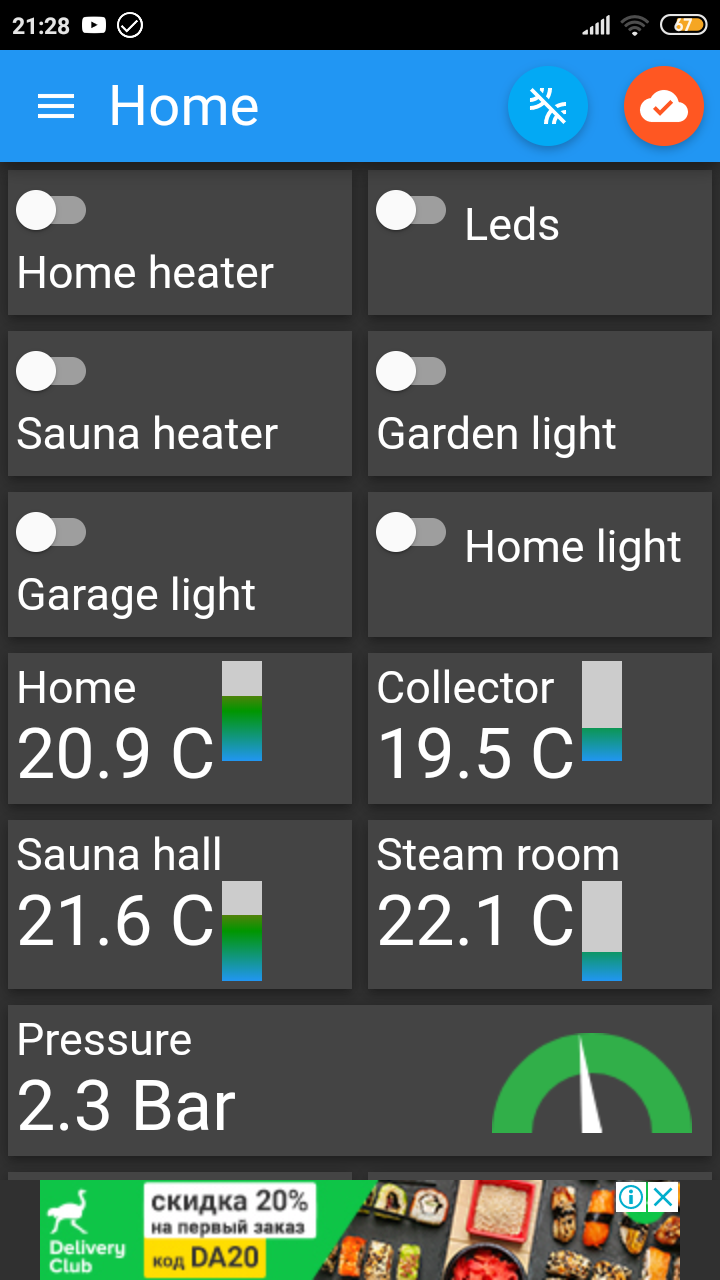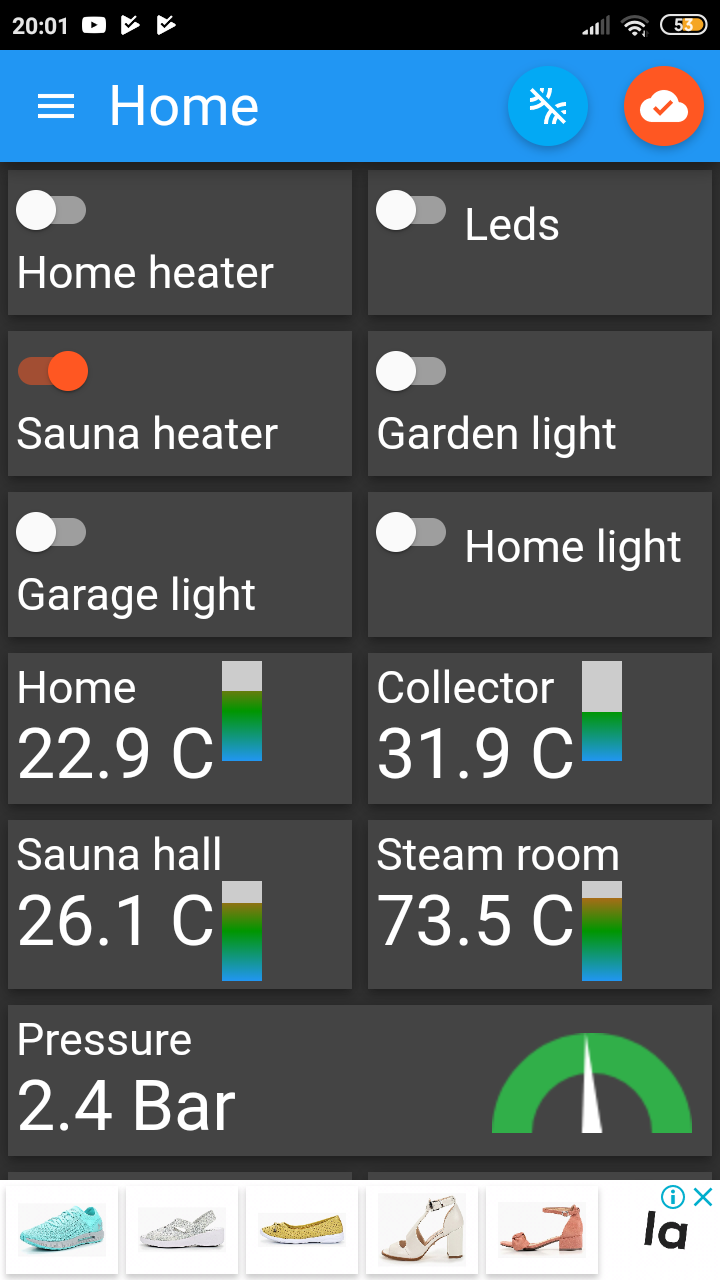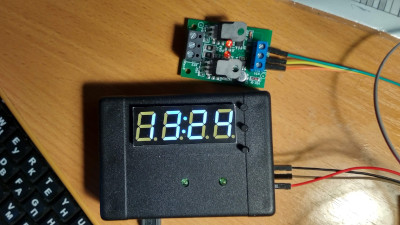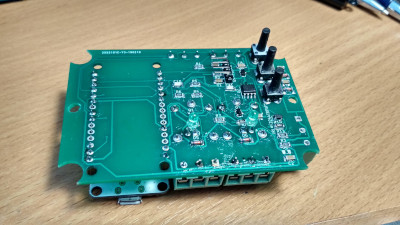One Wire controller
version: 1.0 08.06.2019
Now in an independent project: "Smart Home".
The firmware was developed on the basis of the previous project. In this project, the goal was to create a web interface for setting up the device. Technologically, the interface is a web application that is stored in the extended memory of the ESP8266 device; this application interacts with the main application that runs in the device itself using the websocket protocol. This fact allows you to interact with the device in DIY mode, i.e. instead of a web application there can be any user system. The data format that is used in the exchange is JSON.
A device board has been developed for this project, which includes:
- Electromagnetic relay - 2 pcs;
- LED segment display (4 segments);
- three control buttons;
- voltmeter (you can use one of two inputs up to 5 volts or up to 3.3 volts);
- 1-wire bus adapter (master) based on DS2482S-100 chip.
The prototype of the device can be seen in the picture below.
The controller assumes the expansion of hardware functionality over the 1-wire bus, in the first stage (current) the following devices are supported:
- DS18B20 temperature sensor
- switch / sensor DS2413 (connecting sensors and actuators-relays).
The maximum possible number of devices connected to the controller via the 1-wire bus is limited to 32.
Support is planned for other devices for the 1-wire bus and the development of the functionality of the firmware itself. Firmware includes auto update new versions via the Internet.
The device also supports UDP and MQTT protocols.
As in the previous project, the main goal of the controller is autonomy and self-sufficiency for simple cases of automation. (without the use of expensive external controllers).
The firmware features can be seen in the demo application - esp.1vp.ru .
The mqtt-panel for the smartphone is configured to this option for setting up the application (screenshot below). Basically, the mqtt panel is used to monitor actuators configured in the application, but you can interfere with the automatic operation of the relay. If any relay remains not configured, it can only be controlled in manual mode using the mqtt panel or through the DIY mode, using the websocket protocol.


Currently, a working version of the controller and peripheral boards of 1-ware bus adapters with DIN rail mounting is being developed.
You can order a working prototype controller for $49 USD (Shipping is not included). The amount is limited.
to be continued ...


